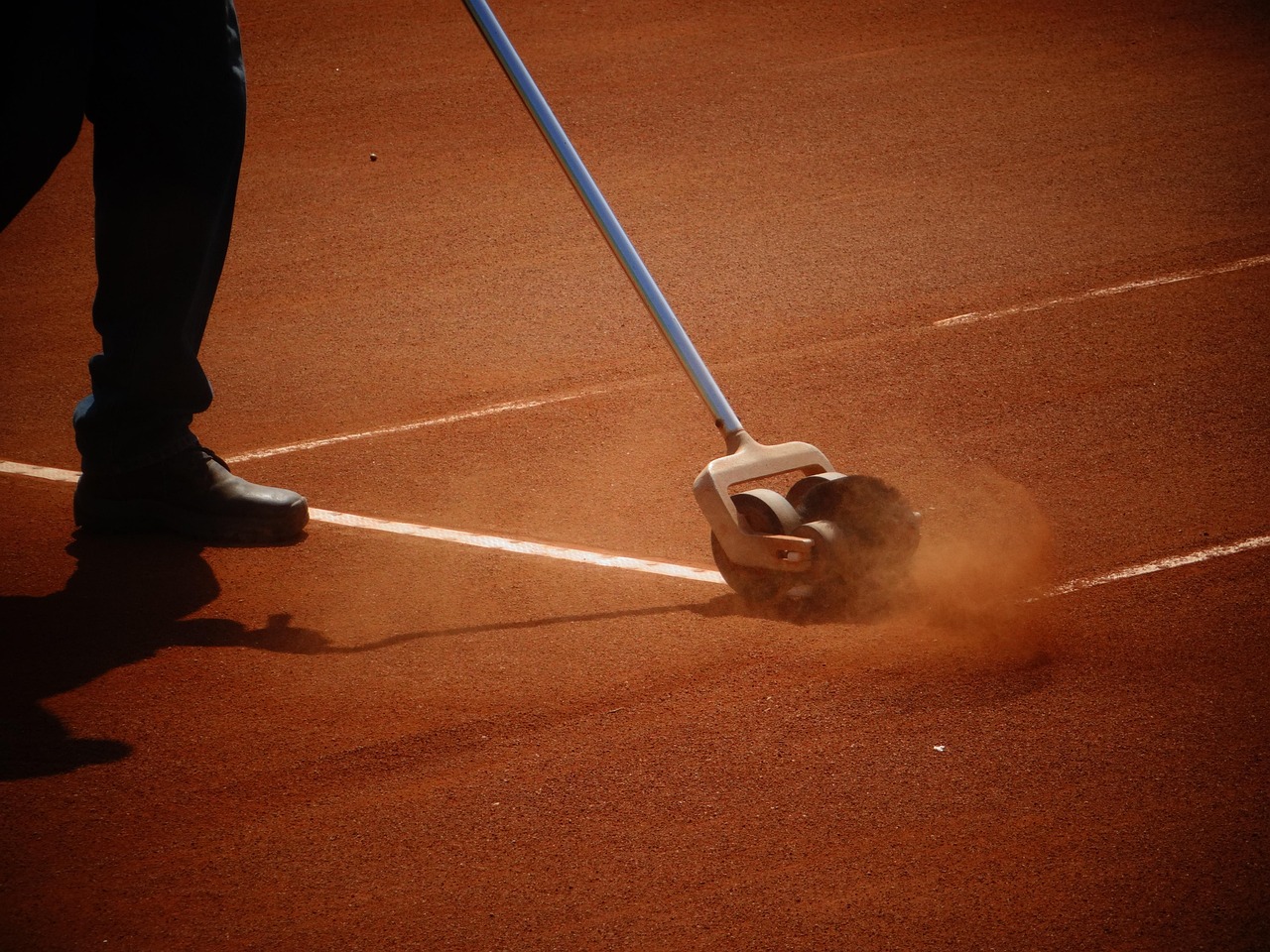Managing the phosphate levels in your swimming pool is essential for maintaining clean and clear water. High phosphate levels can lead to a range of problems, including algae growth and cloudy water, which not only affect the aesthetics of your pool but also its overall health. This article delves into effective strategies for reducing phosphates, ensuring a safe and enjoyable swimming environment.
Phosphates are organic compounds that can enter your pool through various sources, including rainwater, fertilizers, and even swimmers themselves. When present in high concentrations, they serve as a nutrient for algae, leading to unpleasant and potentially hazardous swimming conditions. Understanding the implications of phosphates is crucial for effective pool maintenance.
To manage phosphate levels effectively, you first need to identify if they are elevated. Regular testing is imperative, and there are several methods available:
- Using Phosphate Test Kits: These kits are designed for ease of use and provide quick results, helping you determine if your pool requires phosphate management.
- Types of Phosphate Test Kits: Options include liquid tests and test strips, each with unique advantages based on user preference and accuracy.
- Interpreting Test Results: Generally, phosphate levels exceeding 100 ppb (parts per billion) indicate a need for reduction.
In addition to testing, you can look for visible signs of high phosphates, such as:
- Algae Blooms: These can appear as green, brown, or even black patches in your pool.
- Cloudy Water: When phosphates are high, water clarity can diminish significantly.
There are several effective methods for reducing phosphates in your pool:
- Using Phosphate Removers: These chemical treatments are specifically designed to bind phosphates, making them easier to filter out of the water.
- Regular Cleaning and Maintenance: Routine practices like vacuuming and skimming can prevent phosphate accumulation and maintain water quality.
Preventing phosphate build-up is far easier than dealing with it after it occurs. Here are some proactive measures:
- Controlling Organic Matter: Regularly removing organic debris like leaves and grass can significantly reduce phosphate levels.
- Maintaining Proper Water Balance: Keeping your pool’s water chemistry balanced, especially pH and chlorine levels, is essential for preventing phosphate issues.
Sometimes, phosphate problems may require professional intervention. Here’s when you should consider calling an expert:
- Signs You Need Professional Assistance: Persistent algae growth despite treatment efforts or consistently high phosphate readings may indicate the need for expert help.
- Choosing the Right Pool Service: Look for reputable pool services that have experience in phosphate management and positive reviews from other customers.
By implementing these strategies, you can effectively manage phosphate levels in your swimming pool, ensuring a clean and safe swimming environment. Regular maintenance and proactive measures are key to enjoying crystal-clear water all season long.

What Are Phosphates and Why Are They Problematic in Pools?
Understanding phosphates is essential for maintaining a clean and healthy swimming pool. These compounds, which are commonly found in fertilizers, detergents, and even some pool chemicals, can lead to significant issues if not managed properly. High levels of phosphates can create an environment conducive to algae growth, resulting in cloudy water and increased maintenance efforts. This article delves into the reasons why phosphates are problematic in pools and how to effectively manage them.
Phosphates are chemical compounds that contain the element phosphorus. In the context of swimming pools, they often enter the water through various sources, including:
- Rainwater – which can carry phosphates from the atmosphere.
- Swimmers – who may inadvertently introduce phosphates through lotions, oils, and even sweat.
- Debris – such as leaves and organic matter that decompose in the water.
Once in the pool, phosphates can lead to rapid algae growth. Algae thrive on these nutrients, and when their levels are elevated, it can result in:
- Cloudy Water – Algae blooms can make the water appear murky and uninviting.
- Increased Cleaning Efforts – More frequent vacuuming and chemical treatments are necessary to combat algae.
- Unpleasant Odors – Decomposing algae can produce odors that detract from the swimming experience.
Moreover, the presence of algae can also lead to more severe problems, such as:
- Clogged Filters – Algae can accumulate in pool filters, reducing their efficiency.
- Corrosion – Certain types of algae can produce acids that may corrode pool surfaces and equipment.
In summary, managing phosphate levels is crucial for maintaining a clean and healthy swimming pool. By understanding how phosphates enter the pool and their potential effects, pool owners can take proactive steps to mitigate these issues. Regular testing and maintenance are key in keeping phosphate levels in check, thus ensuring a pleasant swimming environment.

How to Identify High Phosphate Levels in Your Pool?
Identifying high phosphate levels in your pool is a critical step in maintaining a clean and healthy swimming environment. Phosphates, which are nutrients commonly found in fertilizers and organic materials, can lead to significant problems if not managed properly. They can promote algae growth, cloudy water, and increased maintenance efforts. Therefore, understanding how to accurately measure and interpret phosphate levels is essential for all pool owners.
Regular testing for phosphates is vital because elevated levels can lead to algae blooms that not only affect the aesthetics of your pool but also pose health risks to swimmers. When phosphate levels exceed 100 parts per billion (ppb), it becomes increasingly difficult to maintain clear water, making it essential to implement effective treatment strategies.
Phosphate test kits are widely available and designed to provide quick and accurate results. These kits are user-friendly and allow pool owners to assess the need for phosphate management without requiring extensive knowledge of chemistry. By following the manufacturer’s instructions, you can easily determine the phosphate concentration in your pool water.
- Liquid Test Kits: These involve adding a reagent to a water sample and comparing the resulting color to a chart to determine phosphate levels.
- Test Strips: Simply dip the strip into the pool water and compare the color change to a scale, making it a quick and convenient option.
Understanding the results of your phosphate test is crucial for effective pool maintenance. If your test indicates levels above 100 ppb, it’s time to take action. Regular testing can help you monitor phosphate levels and prevent potential issues before they escalate.
In addition to testing, there are visible signs that indicate high phosphate levels. Look out for:
- Algae Blooms: Green, brown, or yellow algae can quickly multiply in phosphate-rich environments.
- Cloudy Water: A cloudy appearance often signals that your pool is struggling to maintain clarity due to excessive nutrients.
It is advisable to test for phosphates regularly, especially after heavy rains, storms, or when you notice any changes in water clarity. Additionally, if you have recently added organic materials to your pool or experienced an influx of debris, testing should be prioritized.
If your tests reveal elevated phosphate levels, there are several methods to manage and reduce them effectively. Chemical treatments, such as phosphate removers, can bind phosphates, making them easier to filter out. Regular cleaning and maintenance, including vacuuming and skimming, also play a significant role in preventing phosphate accumulation.
In summary, identifying high phosphate levels in your pool is essential for maintaining a healthy swimming environment. Utilizing phosphate test kits, interpreting results accurately, and being aware of the signs of phosphate issues will empower you to take timely action. By implementing effective management strategies, you can ensure your pool remains clean, clear, and safe for all swimmers.
Using Phosphate Test Kits
When it comes to maintaining a clean and safe swimming pool, understanding the role of phosphates is essential. Phosphate test kits are invaluable tools that allow pool owners to monitor and manage these compounds effectively. These kits are designed to be user-friendly, providing quick results that can inform your maintenance decisions. By using these kits, you can easily determine whether your pool requires phosphate management, helping to prevent issues such as algae blooms and cloudy water.
Phosphate test kits are a crucial element in pool maintenance, offering a straightforward way to assess phosphate levels. These kits typically come in two forms: liquid tests and test strips. Each type has its own advantages, catering to different user preferences. Liquid tests often provide more accurate readings, while test strips are known for their convenience and speed.
- Liquid Tests: These involve mixing a sample of pool water with a reagent to produce a color change, which can be compared to a chart for accurate measurement.
- Test Strips: Simply dip a strip into the water and compare the resulting colors to the provided scale for a quick assessment.
Regardless of the type you choose, using a phosphate test kit is a simple process. To begin, collect a sample of your pool water, following the instructions specific to your test kit. After obtaining the results, it’s important to interpret them correctly. Generally, phosphate levels above 100 ppb (parts per billion) indicate a need for intervention. Regular testing can help you stay ahead of any potential issues, ensuring your pool remains in optimal condition.
Moreover, frequent use of phosphate test kits can help you track the effectiveness of your maintenance strategies. If you notice that phosphate levels are consistently high, it may be time to reassess your cleaning routine or consider using phosphate removers. These chemical treatments can bind phosphates, making it easier for your pool’s filtration system to eliminate them.
In addition to routine testing, being aware of the signs of phosphate issues can also guide your maintenance efforts. If you observe algae growth or cloudy water, these may be indicators of elevated phosphate levels. By acting promptly, you can mitigate these problems before they escalate.
Overall, phosphate test kits are an essential part of maintaining a healthy swimming environment. They empower pool owners with the knowledge needed to manage phosphate levels effectively, ensuring clean and clear water for enjoyable swimming experiences. By incorporating regular testing into your pool maintenance routine, you can prevent phosphate-related issues and keep your pool in top shape.
Types of Phosphate Test Kits
When it comes to maintaining a clean and clear swimming pool, understanding the various available is essential. These kits are designed to help pool owners manage phosphate levels effectively, ensuring a healthy swimming environment. There are two primary categories of phosphate test kits: liquid tests and test strips. Each type has its own unique advantages, which cater to different user preferences and accuracy requirements.
Liquid test kits are known for their high accuracy and detailed results. Typically, these kits include reagents that react with the phosphate present in the water, resulting in a color change that corresponds to the phosphate concentration. Here are some key benefits of using liquid test kits:
- Precision: Liquid tests often provide more precise readings compared to strips, making them ideal for users who require detailed analysis.
- Versatility: Many liquid test kits can measure multiple parameters, not just phosphates, allowing for comprehensive water quality assessment.
- Cost-Effective: Although the initial investment may be higher, the long-term use of liquid reagents can be more economical.
Test strips are a convenient and quick option for pool owners who prefer a more straightforward approach. These strips are dipped into the pool water and change color based on the phosphate levels. Here’s what makes test strips appealing:
- Ease of Use: Test strips are incredibly user-friendly, requiring no additional equipment or complex procedures.
- Rapid Results: Users can obtain results in just a few minutes, making them ideal for those who need quick assessments.
- Portability: Test strips are compact and easy to carry, making them perfect for on-the-go testing.
When selecting between liquid test kits and test strips, consider the following factors:
- Frequency of Testing: If you test your pool water frequently, test strips may provide the convenience you need. For less frequent but more detailed testing, liquid kits might be better.
- Level of Accuracy Required: For pools with persistent phosphate issues, accuracy is crucial, making liquid tests the preferred choice.
- Budget: Assess your budget for testing supplies, as this can influence your choice between the two options.
Ultimately, both liquid tests and test strips offer valuable insights into phosphate levels in your pool. Understanding their strengths and weaknesses enables pool owners to make informed decisions, ensuring a clean and enjoyable swimming experience.
Interpreting Test Results
Understanding how to interpret phosphate test results is crucial for maintaining a healthy swimming pool environment. Phosphate levels are measured in parts per billion (ppb), and knowing what these numbers mean can help you take appropriate action to ensure clean water.
Phosphates are essential nutrients for algae growth, and elevated levels can lead to significant problems in your pool. Generally, levels above 100 ppb indicate that immediate action is required to reduce phosphates. High phosphate concentrations can result in:
- Algae Blooms: Rapid growth of algae can turn your pool water green and cloudy.
- Increased Cleaning Efforts: More frequent vacuuming and chemical treatments may be necessary.
- Unpleasant Odors: High phosphate levels can contribute to unpleasant smells in and around your pool.
When you use a phosphate test kit, the results will typically show a range of values. Here’s how to interpret them:
| Phosphate Level (ppb) | Action Required |
|---|---|
| 0 – 50 | No action needed; levels are acceptable. |
| 51 – 100 | Monitor levels; consider preventive measures. |
| 101 – 200 | Take action to reduce phosphates; consider using a phosphate remover. |
| 201+ | Immediate action required; severe risk of algae growth. |
Being aware of your pool’s phosphate levels is essential for several reasons:
- Prevention: Early detection of high phosphate levels can prevent algae outbreaks.
- Cost-Effectiveness: Managing phosphates proactively can save you money on chemicals and maintenance.
- Health Safety: Clear and clean water is crucial for a safe swimming experience.
If your test results indicate high phosphate levels, consider the following steps:
- Use Phosphate Removers: These products bind phosphates, making them easier to filter out.
- Increase Cleaning Frequency: Regular skimming and vacuuming help eliminate organic debris that contributes to phosphate levels.
- Balance Water Chemistry: Ensure that pH and chlorine levels are within the recommended ranges to discourage algae growth.
After taking corrective measures, it’s essential to retest your pool water. Ideally, retesting should occur:
- 1 Week After Treatment: To assess the effectiveness of your phosphate reduction efforts.
- Regularly During Pool Season: Monthly testing can help you stay ahead of potential issues.
By understanding and interpreting phosphate test results, you can take proactive steps to maintain a healthy and enjoyable swimming pool. Regular monitoring and timely actions are key to ensuring your pool remains a safe and inviting space.
Signs of Phosphate Issues
Understanding the in your pool is crucial for maintaining a clean and healthy swimming environment. Phosphates, which are commonly found in fertilizers, organic matter, and even some pool chemicals, can lead to a range of problems if their levels become too high. By recognizing these indicators early, you can take prompt action to prevent more serious issues, such as algae blooms and murky water.
While testing is the most accurate way to determine phosphate levels, there are several visible signs that indicate a potential phosphate problem:
- Algae Blooms: One of the most noticeable signs of high phosphates is the presence of algae. You may see green, yellow, or even black patches forming on the pool walls or floor. Algae thrives in environments rich in phosphates, making this a clear warning sign.
- Cloudy Water: If your pool water appears cloudy or murky, it could be a result of excessive phosphates. High phosphate levels can disrupt the balance of your pool chemistry, leading to poor water clarity.
- Increased Cleaning Efforts: If you find yourself cleaning your pool more frequently than usual, this could indicate a phosphate issue. The presence of algae and other contaminants may require more maintenance to keep your pool clean.
- Unpleasant Odors: A strong, musty smell can also be a sign of algae growth, which is often fueled by high phosphate levels. If you notice a foul odor, it’s essential to investigate further.
Recognizing these signs is vital for timely intervention. If left unchecked, high phosphate levels can lead to more serious problems, including:
- Severe Algae Infestations: What starts as a small algae bloom can quickly escalate into a larger problem, requiring more intensive treatments and potentially damaging your pool.
- Increased Chemical Costs: The more algae and contaminants in your pool, the more chemicals you will need to use to restore balance. This can lead to higher maintenance costs.
- Health Risks: Algae can pose health risks to swimmers, leading to skin irritations and other health concerns.
If you observe any of the signs mentioned above, it’s crucial to take immediate action:
- Test Your Water: Use a phosphate test kit to measure the levels accurately. This will help you determine the extent of the problem.
- Use Phosphate Removers: Consider using a phosphate remover to help bind and eliminate the excess phosphates from your pool water.
- Increase Cleaning Frequency: Regular vacuuming and skimming can help remove organic debris that contributes to phosphate buildup.
- Consult a Professional: If the problem persists, it may be wise to seek the help of a pool maintenance professional who can offer targeted solutions.
By being vigilant and recognizing the signs of phosphate issues early, you can maintain a clean and healthy pool environment, ensuring a safe swimming experience for everyone.

What Are the Best Methods to Lower Phosphate Levels?
Maintaining a clean and clear swimming pool is essential for a healthy swimming experience. One of the most significant challenges pool owners face is managing phosphate levels. High phosphate levels can lead to algae growth, cloudy water, and increased maintenance efforts. Fortunately, there are several effective methods to lower phosphates in your pool, ensuring a pristine swimming environment.
When it comes to reducing phosphates in your pool, various strategies can be employed. These methods range from chemical treatments to physical maintenance practices.
Phosphate removers are specially formulated chemical treatments designed to bind phosphates in the water, making them easier to filter out. These products come in different formulations, including:
- Granular phosphate removers: Easy to apply and effective for large pools.
- Liquid phosphate removers: Quick-acting and ideal for smaller pools or immediate needs.
Regular use of phosphate removers can significantly reduce phosphate levels, especially after heavy rainfall or debris accumulation.
Routine maintenance is crucial in preventing phosphate build-up. Here are some essential practices:
- Skimming and vacuuming: Remove organic debris like leaves and dirt that can contribute to phosphate levels.
- Brushing surfaces: Algae can cling to pool walls, releasing phosphates into the water. Regular brushing helps prevent this.
- Filter maintenance: Ensure your pool filter is clean and functioning correctly to effectively remove phosphates.
Maintaining proper water chemistry is vital for controlling phosphates. Regularly test and balance the following:
- pH levels: Aim for a pH between 7.2 and 7.6 for optimal chemical performance.
- Chlorine levels: Keeping chlorine levels within the recommended range helps combat algae and phosphate accumulation.
Since phosphates are a primary food source for algae, implementing prevention techniques can help:
- Use algaecides: Regularly applying algaecides can inhibit algae growth and reduce phosphate levels.
- Maintain proper circulation: Ensure your pool pump runs long enough each day to circulate water effectively, preventing stagnant areas where algae can thrive.
Organic debris can significantly contribute to phosphate levels in your pool. To minimize this, consider:
- Regularly cleaning the pool area: Keep the surrounding area free from leaves, grass clippings, and other organic materials.
- Using a pool cover: A cover can prevent debris from entering the pool, especially during windy seasons or storms.
Regularly testing your pool water for phosphates is essential. Using phosphate test kits allows you to monitor levels accurately. If tests indicate levels above 100 ppb, it’s time to take action.
By implementing these methods, you can effectively lower phosphate levels in your pool, ensuring clean and clear water for a safe swimming experience. Remember that a combination of chemical treatments and regular maintenance is the key to managing phosphates effectively.
Using Phosphate Removers
When it comes to maintaining a pristine swimming pool, managing phosphate levels is crucial. One of the most effective methods for achieving this is through the use of phosphate removers. These specialized chemical treatments are designed to bind phosphates in the water, facilitating their removal through filtration systems. In this section, we will delve deeper into the various aspects of using phosphate removers, their formulations, and the benefits they offer.
Phosphate removers are chemical agents formulated to specifically target and eliminate phosphates in pool water. They work by binding phosphates, making them easier to filter out. This is particularly important because high levels of phosphates can lead to significant algae growth, resulting in cloudy and uninviting water.
Phosphate removers come in various formulations and concentrations, allowing pool owners to choose the best option for their specific needs. Here are some common types:
- Granular Formulations: These are often easy to apply and dissolve in water, making them suitable for quick treatments.
- Liquid Formulations: Liquid phosphate removers can be added directly to the pool and often work faster than granular options.
- Powdered Formulations: These are typically used for larger pools or when phosphate levels are extremely high.
The mechanism of action for phosphate removers involves binding phosphates to form a compound that can be easily filtered out. When added to the pool, these chemicals interact with the phosphates in the water, effectively reducing their concentration. This process not only helps in clearing the water but also in preventing algae blooms.
Incorporating phosphate removers into your pool maintenance routine offers several advantages:
- Improved Water Clarity: By reducing phosphate levels, these products help maintain clearer water.
- Reduced Algae Growth: Lower phosphate levels mean a decreased likelihood of algae blooms, which can save time and effort in cleaning.
- Enhanced Filtration Efficiency: With fewer phosphates in the water, your filtration system can operate more effectively.
To maximize the effectiveness of phosphate removers, follow these guidelines:
- Read Instructions: Always follow the manufacturer’s instructions for dosage and application to ensure optimal results.
- Test Water Regularly: Regular testing of phosphate levels will help you determine when to apply treatments.
- Combine with Other Treatments: For best results, consider using phosphate removers in conjunction with other pool maintenance products.
It’s essential to use phosphate removers when:
- Your phosphate test results exceed 100 ppb.
- You notice signs of algae growth or cloudy water.
- After heavy rainfall or debris accumulation, as these can contribute to higher phosphate levels.
In conclusion, using phosphate removers is a highly effective strategy for maintaining clean and clear pool water. By understanding their types, benefits, and application methods, pool owners can significantly enhance their water quality and reduce maintenance efforts.
Regular Cleaning and Maintenance
Maintaining a clean and healthy swimming pool is essential for ensuring a safe and enjoyable swimming experience. One of the critical aspects of pool maintenance is the regular cleaning and maintenance of the pool environment. Routine cleaning practices, such as vacuuming, skimming, and maintaining proper water chemistry, are vital in preventing phosphate accumulation, which can lead to various pool problems.
Regular cleaning helps to eliminate debris and organic matter that can contribute to elevated phosphate levels in your pool. When leaves, dirt, and other organic materials decompose, they release phosphates into the water. This accumulation can promote algae growth, resulting in cloudy water and a less inviting swimming environment. By implementing a consistent cleaning routine, you can significantly reduce the risk of phosphate issues.
- Vacuuming: Regular vacuuming helps to remove settled debris from the pool floor. It is recommended to vacuum at least once a week, or more often if your pool is surrounded by trees or heavy vegetation.
- Skimming: Daily skimming of the water surface is crucial for removing floating debris such as leaves and insects. This simple task prevents organic matter from sinking and decomposing, which can lead to increased phosphate levels.
- Brushing Walls and Tiles: Algae can cling to the walls and tiles of your pool. Brushing these surfaces weekly helps to dislodge any potential algae growth before it becomes a problem.
In addition to physical cleaning, maintaining proper water chemistry is essential in preventing phosphate accumulation. Regularly testing your pool water for pH, chlorine, and alkalinity levels will help you keep your pool balanced. Here are some important points to consider:
- pH Levels: Keeping the pH level between 7.2 and 7.6 is crucial for effective chlorine performance and overall water quality.
- Chlorine Levels: Ensure that chlorine levels are maintained between 1-3 ppm (parts per million) to effectively kill bacteria and algae.
- Alkalinity: Maintaining proper alkalinity levels (between 80-120 ppm) helps stabilize pH levels and improve water quality.
Another essential aspect of pool maintenance is the proper use of filtration systems. Your pool filter plays a significant role in removing impurities from the water, including phosphates. Here are some tips for effective filtration:
- Run the Filter Regularly: Ensure your pool filter runs for at least 8-12 hours a day, especially during peak swimming season.
- Clean or Replace Filter Media: Regularly check and clean your filter media, whether it’s sand, cartridge, or diatomaceous earth, to ensure optimal performance.
As seasons change and environmental conditions fluctuate, the cleaning needs of your pool may also change. Regularly monitor your pool’s condition and adjust your cleaning routine accordingly. For instance, during autumn, you may need to increase skimming and vacuuming due to falling leaves.
In conclusion, implementing a diligent cleaning and maintenance routine is crucial for preventing phosphate accumulation in your pool. By vacuuming, skimming, maintaining proper water chemistry, and effectively using your filtration system, you can ensure your pool remains a clean and inviting space for swimming. Regular attention to these practices not only enhances the aesthetic appeal of your pool but also contributes to a healthier swimming environment.

How to Prevent Phosphate Build-Up in Your Pool?
Maintaining a clean and clear swimming pool is a priority for any pool owner. One of the most critical aspects of pool maintenance is preventing phosphate build-up. Phosphates can lead to significant issues, including algae growth and cloudy water, making it essential to take proactive measures.
Preventing phosphate build-up is easier than managing it once it occurs. When phosphates accumulate in your pool, they create an ideal environment for algae to thrive. This not only affects the appearance of your pool but also requires more frequent cleaning and chemical treatments to restore clarity. By implementing preventive strategies, you can maintain a healthier swimming environment and reduce maintenance costs.
- Regular Debris Removal: Organic matter, such as leaves and grass, can introduce phosphates into your pool. Regularly skimming the surface and vacuuming the bottom helps minimize this risk.
- Proper Water Balance: Maintaining balanced water chemistry is essential. Regularly test your pool’s pH, alkalinity, and chlorine levels. Keeping these parameters in check can help inhibit phosphate accumulation.
- Use of Algaecides: Applying algaecides as a preventive measure can help control algae growth before it becomes a problem. Look for products specifically designed to target phosphates.
- Limit Fertilizer Runoff: If you have gardens or lawns near your pool, be mindful of fertilizer use. Runoff can introduce phosphates into your pool. Consider using phosphate-free fertilizers to mitigate this issue.
- Install a Pool Cover: Using a pool cover when the pool is not in use can significantly reduce debris accumulation and evaporation, both of which contribute to phosphate levels.
In addition to the proactive measures mentioned above, establishing a routine maintenance schedule is vital. This includes:
- Weekly water testing and adjustments.
- Regular cleaning of filters and skimmers.
- Monthly deep cleaning, including tile scrubbing and wall brushing.
By adhering to a consistent maintenance routine, you can effectively manage phosphate levels and keep your pool water sparkling clear.
Investing in a phosphate test kit can aid in monitoring levels effectively. These kits allow you to:
- Quickly assess phosphate concentrations.
- Identify trends over time to adjust maintenance practices accordingly.
Understanding the results is crucial; levels above 100 ppb typically indicate a need for action.
Despite your best efforts, there may be times when phosphate levels remain high. Signs that you may need to consult a professional include:
- Persistent algae blooms that do not respond to treatments.
- Consistent high phosphate readings despite regular maintenance.
Choosing a reputable pool service can provide additional expertise and solutions tailored to your specific needs.
Controlling Organic Matter
Organic matter, particularly debris such as leaves, grass clippings, and other plant materials, plays a significant role in contributing to phosphate levels in swimming pools. This accumulation can lead to a variety of issues, including algae growth, cloudy water, and an overall decline in water quality. Thus, it is essential to implement effective strategies to manage and control this organic matter.
Understanding the impact of organic debris on your pool’s phosphate levels is crucial for maintaining a clean and healthy swimming environment. When organic matter decomposes, it releases phosphates into the water, which can promote algae blooms. These blooms not only affect the aesthetic appeal of your pool but also complicate cleaning efforts, leading to increased maintenance costs.
- Regular Skimming: Use a skimmer net to remove leaves and debris from the surface of the water at least once a week. This simple task can significantly reduce the amount of organic matter that sinks to the bottom and decomposes.
- Vacuuming: Regularly vacuum the pool floor to eliminate any settled debris. This is especially important after storms or windy days when more organic matter may have entered the pool.
- Using a Pool Cover: A high-quality pool cover can prevent leaves and other organic debris from entering the pool when it is not in use. This is particularly beneficial during fall when leaves are more likely to fall into the water.
- Landscaping Considerations: Adjust your landscaping to minimize the amount of organic debris that falls into the pool. For instance, trim back trees and shrubs near the pool area to reduce leaf litter.
In addition to removing visible debris, maintaining a regular cleaning schedule is vital. This includes:
- Brushing Walls and Floors: Regularly brushing the pool surfaces helps dislodge any algae or organic material that may be clinging to the walls and floor.
- Water Chemistry Testing: Regularly test your pool water to ensure that the chemical balance is optimal. This includes monitoring pH, chlorine levels, and alkalinity, which can help control algae growth.
Keep an eye on your water levels, as low water levels can lead to increased concentrations of phosphates. Ensure that your pool is filled to the appropriate level to help dilute any contaminants present. Additionally, consider using a phosphate remover if you notice persistent phosphate levels despite your cleaning efforts.
By actively managing organic matter in your pool, you can significantly reduce phosphate levels and maintain a clean, clear swimming environment. Regular maintenance and proactive strategies are key to preventing the buildup of organic debris and ensuring that your pool remains a safe and enjoyable space for swimming.
Maintaining Proper Water Balance
Maintaining a clean and safe swimming pool requires diligent attention to water chemistry. One of the most critical aspects of this maintenance is keeping your pool’s water balanced, particularly the pH and chlorine levels. By ensuring these levels are within the recommended ranges, you can significantly reduce the likelihood of phosphate issues, which can lead to algae growth and cloudy water.
Water balance is essential for several reasons. When pH levels are too high or too low, it can affect the efficiency of chlorine, making it less effective at killing bacteria and algae. This inefficiency can lead to increased phosphate levels in the water, as algae thrive in conditions where chlorine is not adequately managing their growth. Regularly testing water chemistry helps in maintaining the right balance and prevents phosphate accumulation.
Regular testing of pool water is a straightforward process. You can use test strips or liquid test kits available at pool supply stores. These kits allow you to measure pH, chlorine, and phosphate levels accurately. It is advisable to conduct these tests at least once a week, especially during peak swimming seasons.
- pH Level: The ideal range is between 7.2 and 7.8. This range ensures that chlorine works effectively and minimizes the risk of algae growth.
- Chlorine Level: The recommended level is between 1.0 and 3.0 ppm (parts per million). Keeping chlorine levels within this range helps in controlling organic matter and phosphates.
Adjusting water chemistry should be done based on test results. If pH or chlorine levels are out of balance, use appropriate chemicals to bring them back to the ideal range. For instance, if pH is too high, adding a pH decreaser can help. Conversely, if it is too low, a pH increaser can restore balance.
Several factors can influence water chemistry, including:
- Environmental debris, such as leaves and pollen, can introduce organic material that contributes to phosphate levels.
- Swimmer load can also affect water chemistry; more swimmers mean more contaminants.
- Rainfall can dilute chemicals and alter pH levels.
In addition to monitoring chemical levels, regular maintenance activities like skimming, vacuuming, and brushing the pool surfaces are crucial. These practices help remove organic debris that can contribute to phosphate levels. By maintaining a clean pool environment, you can reduce the chances of algae growth and keep your pool water clear.
If you find that maintaining proper water balance is consistently challenging or if phosphate levels remain high despite your best efforts, it may be time to consult a professional pool service. Experts can provide advanced testing and treatments that may be necessary for your specific situation.
In summary, maintaining proper water balance is vital for preventing phosphate issues in your pool. By regularly testing and adjusting pH and chlorine levels, along with consistent cleaning and maintenance, you can enjoy a healthy and inviting swimming environment.

When to Seek Professional Help for Phosphate Issues?
Maintaining a swimming pool involves various challenges, one of which is managing phosphate levels. Phosphates, while naturally occurring, can lead to significant water quality issues if not properly monitored and controlled. Understanding when to seek professional help for phosphate issues is crucial for ensuring that your pool remains a safe and enjoyable environment.
Before deciding to call in the experts, it is essential to recognize the signs that indicate a phosphate problem. Common symptoms include:
- Persistent Algae Blooms: If you notice algae growth despite regular treatments, it may be a sign of high phosphate levels.
- Cloudy Water: Water that appears murky or unclear can indicate an imbalance, often linked to elevated phosphates.
- Frequent Cleaning Needs: If you find yourself vacuuming and skimming more often than usual, phosphates might be contributing to the accumulation of organic matter.
High phosphate levels can lead to more than just aesthetic issues; they can also pose health risks. Algae blooms can create unsafe swimming conditions, and the chemicals required to combat these issues can be harsh. Recognizing when these problems arise is crucial for pool owners.
While some phosphate issues can be managed with DIY solutions, there are times when professional intervention is necessary. Consider contacting a pool service if:
- Your phosphate readings consistently exceed 100 ppb, despite your efforts to lower them.
- You are experiencing recurring algae blooms that do not respond to standard treatments.
- You lack the time or resources to effectively manage the phosphate levels in your pool.
Hiring a professional pool service can provide several advantages:
- Expert Knowledge: Professionals are trained to identify and address phosphate issues quickly and effectively.
- Access to Specialized Equipment: Pool services often use advanced technology and products that are not available to the average consumer.
- Time-Saving: Allowing professionals to handle phosphate problems frees you to enjoy your pool without the stress of maintenance.
When selecting a pool service, consider the following factors:
- Experience: Look for companies with a solid track record in pool maintenance and phosphate management.
- Customer Reviews: Check online reviews and testimonials to gauge the quality of service provided.
- Certifications: Ensure that the service is certified and follows industry standards for pool care.
In conclusion, understanding when to seek professional help for phosphate issues is essential for maintaining a clean and safe swimming pool. By recognizing the signs of phosphate problems and knowing the benefits of professional intervention, pool owners can ensure they make informed decisions that enhance their swimming experience.
Signs You Need Professional Assistance
When it comes to maintaining a clean and inviting swimming pool, understanding the signs that indicate the need for professional assistance is crucial. Many pool owners may attempt to handle algae growth and high phosphate levels independently, but there are times when expert help is necessary to restore water quality effectively.
Phosphate issues in pools often manifest in various ways. Here are some common indicators:
- Persistent Algae Growth: If you notice algae blooms despite regular cleaning and chemical treatments, it could indicate high phosphate levels. Algae thrive on phosphates, and their continuous presence suggests that your current efforts are insufficient.
- Cloudy Water: High phosphate concentrations can lead to murky water. If your pool water appears cloudy even after proper filtration and chemical balancing, it may be time to investigate phosphate levels.
- Frequent Cleaning Required: If you find yourself cleaning your pool more often than usual, this could be a sign of underlying phosphate issues. Increased algae growth necessitates more frequent maintenance.
- High Phosphate Readings: Regular testing is key. If your phosphate test kit consistently shows levels above 100 ppb (parts per billion), it’s a clear signal that professional help may be needed.
While DIY solutions can be effective for minor issues, persistent problems often require the expertise of a professional. Here are a few reasons to consider calling in the experts:
- Expert Knowledge: Professionals have the training and experience to diagnose complex issues that may not be apparent to the average pool owner. They can identify underlying problems that contribute to high phosphate levels.
- Access to Advanced Treatments: Pool service professionals have access to specialized products and equipment that can effectively reduce phosphates and improve water quality.
- Time-Saving: Managing a pool can be time-consuming. Hiring a professional allows you to focus on enjoying your pool rather than constantly battling algae and water quality issues.
When seeking professional assistance, it’s essential to choose a reputable pool service. Here are some tips:
- Research Reviews: Look for pool services with positive customer feedback. Online reviews can provide insight into the quality of service and effectiveness in resolving phosphate issues.
- Verify Credentials: Ensure that the company is licensed and insured. This protects you and guarantees that the service meets industry standards.
- Ask About Experience: Inquire about the company’s experience with phosphate management and algae control. A knowledgeable provider will have a proven track record.
In conclusion, recognizing the signs of phosphate problems in your pool is vital for maintaining a healthy swimming environment. If you experience persistent algae growth or consistently high phosphate readings, it may be time to seek professional help. By choosing the right pool service, you can ensure that your pool remains clean, clear, and enjoyable for all.
Choosing the Right Pool Service
When it comes to maintaining a clean and healthy swimming pool, is essential. A reputable pool service can significantly impact your ability to manage phosphate levels effectively. Phosphates, if left unchecked, can lead to algae growth and murky water, making your pool less inviting. Therefore, selecting a service provider with the right expertise is crucial.
Experience in the pool maintenance industry can make all the difference. An experienced provider is likely to be familiar with various pool chemistry challenges, including phosphate management. They will have the knowledge to implement effective strategies tailored to your specific pool conditions.
- Positive Reviews: Check online reviews and testimonials. Providers with a history of satisfied customers are more likely to deliver quality service.
- Certifications: Look for certifications from recognized organizations. This indicates that the provider is knowledgeable about industry standards and best practices.
- Range of Services: A comprehensive service offering, including regular maintenance, chemical balancing, and emergency repairs, can be beneficial.
- Transparent Pricing: Ensure the provider offers clear pricing without hidden fees. This transparency builds trust and helps you budget effectively.
One effective way to gauge a pool service’s expertise is by asking questions during your initial consultation. Inquire about their experience with phosphate management and request examples of past successful treatments. A knowledgeable provider should be able to explain their methods clearly and confidently.
Regular maintenance by a reputable pool service helps to:
- Prevent Phosphate Accumulation: Regular cleaning and chemical balancing can prevent the buildup of organic matter that contributes to phosphates.
- Enhance Water Clarity: A well-maintained pool is less likely to develop algae blooms, ensuring clear and inviting water.
- Save Time and Money: Investing in professional services can save you time and reduce costly repairs in the long run.
A quality pool service will demonstrate several key traits:
- Prompt Communication: They should respond quickly to inquiries and provide clear information about services.
- Thorough Inspections: A good provider will conduct comprehensive inspections to identify potential issues early.
- Customized Solutions: They should offer tailored solutions based on your pool’s specific needs.
If you notice persistent issues with phosphate levels or poor communication from your current provider, it may be time to consider a change. Look for a service that prioritizes customer satisfaction and demonstrates a proactive approach to pool maintenance.
In summary, selecting the right pool service is crucial for effective phosphate management and overall pool health. By focusing on experience, positive reviews, and comprehensive service offerings, you can ensure your pool remains a clean and enjoyable environment.
Frequently Asked Questions
- What are the common signs of high phosphates in my pool?
High phosphate levels often manifest as cloudy water or visible algae blooms. If you notice these issues, it’s time to test your water!
- How can I test for phosphates in my pool?
You can easily test for phosphates using phosphate test kits, which come in liquid or strip forms. These kits provide quick and accurate results, helping you know if you need to take action.
- What methods can I use to lower phosphate levels?
Effective methods include using phosphate removers and maintaining a regular cleaning schedule. Vacuuming, skimming, and keeping the water chemistry balanced are key strategies!
- How can I prevent phosphate build-up in my pool?
To prevent phosphate accumulation, regularly remove organic debris like leaves and grass, and ensure your pool’s water chemistry is well-balanced.
- When should I consider hiring a professional for phosphate issues?
If you’re dealing with persistent algae growth or consistently high phosphate readings, it might be time to call in the experts. They can provide targeted solutions!




